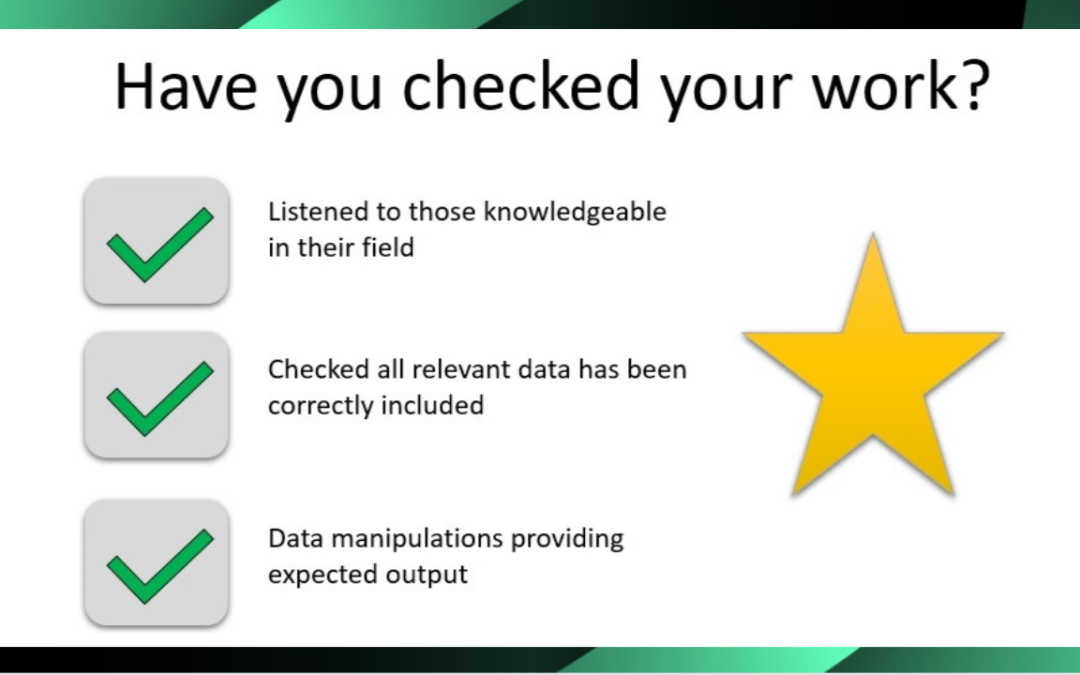Have you checked your work?
“Have you checked it works?” are words I say which often seems to annoy or upset people. Oops!
Say you were buying a car and the garage says, oops we forgot to insert the engine under the hood but it doesn’t matter it’s still a car, would you be happy and pay for full price for the car? The same applies to data based products. If you say it’s going to do something you should check that it performs the functions stated before providing it to the users as a final product.
Stop the rant Pauline and tell us something useful!
Stand back and say does it make sense
Remember to:
- Listen
Listen to those knowledgeable in the field to which the data is attached – for example if creating a finance related product, listen to those with finance experience.
Speak to the user to see if the results of your data output is in line with expectations. If you have a different answer to that which they expect, don’t think you are automatically right and you have created this brand new insight (you may have but be wary!) and don’t tell them they are wrong!!! – listen to the reasons why they expect to see a different outcome, then go back and check your workings. Not only is it counterproductive to become argumentative, if you do ultimately create useful insights the user may refuse to use those insights through lack of trust which can lead to poor user adoption of the product.
- Ensure all data has been correctly included
Make sure no relevant data is missing and make sure there is no unnecessary duplication.
For example, if data in an excel spreadsheet is loaded into your program as a new data source then watch out for totals! If the total is in a row in the excel spreadsheet then the program is unlikely to know its a total, it just treats it as another row of data. If the excel spreadsheet shows a total profit of £50k and the new product shows a profit of £100K you have not magically increased the profit, you have brought in a total row. Standing back and saying does it make sense that I now have £100K or should I still have £50K allows you to spot errors in the data load.
- Ensure data manipulations creates expected output
Check the output from data manipulations. Take a sample of the data, and look at its start and end value. Is it in line with expectations?
For example, when merging tables make sure you are undertaking the correct type of join, eg if undertaking a left join make sure it is initiated from the correct table. This is where I am glad I no longer audit work, as there have been/are products in workplaces where the data has been incorrectly joined and people are blindly following the output – “the computer says”. Often it is not the users fault as they may not be seeing the entire system to know that along the way items have apparently “accidentally” dropped off and apparently its not the product creators fault, hmmm….
- Given the brain time to reflect
Sometimes it helps to put the project to the side and come back to it later with a fresh mind to do the sense check. A tip I was given for sense checking is:
Don’t review your work in the same place you created it.
Try moving to a different desk or room, just that change can often help you spot something – yes, I know doesn’t work if your computer can’t be moved!
Humans required
The above shows why humans are still really needed in the workplace. Embrace the use of data, bring more data sources together to create better insights, use diagrams to effectively communicate the results of the analysis but please, please, please, remember to stand back from your work and ask “Does this make sense?”
